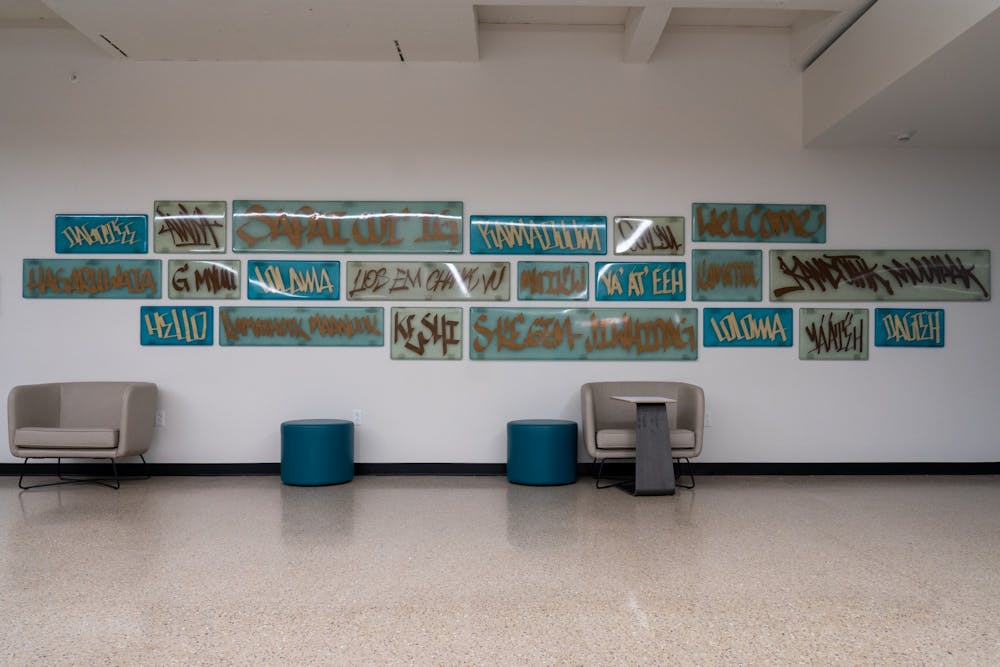From afternoon naps sheltered by grass huts in Thailand to cultural celebrations activated by sacred temples across the world, Wanda Dalla Costa has experienced how dozens of countries have found ways to reconcile architecture with cultural preservation.
"I saw traditional environments still intact," said Dalla Costa, Institute professor at The Design School and associate professor at the School of Construction. "I saw these examples of built environments still aligned with many different people in different cultures, lifeways."
Dalla Costa said she returned to her reserve of the Saddle Lake Cree Nation in Canada aware of the disconnect between North American architecture and the prolific diversity it was built upon.
Now the founder and director of the Indigenous Design Collaborative at ASU, Dalla Costa said the trajectory of her career has been spent exploring this divide.
"Why is there such a disparate difference between culture and our built environment?" Dalla Costa said. "We should be celebrating the people of each place that we practice in."
Just weeks before the national Indigenous Peoples' Day holiday on Oct. 12, the city of Tempe signed an Indigenous People's Proclamation that officially recognized the holiday and announced Dalla Costa would work with the city toward incorporating Indigenous values through architecture, development and sustainability.
"We are working towards creating citywide design guiding principles that ensures Tempe builds our city with Indigenous knowledge and practices in mind," the proclamation said.
The city applied for a grant that would support a design project spearheaded by Dalla Costa, IDC and her Indigenous Project Delivery class.
Designed by Indigenous artists from Native Nations in the Tempe area, the project focuses on connecting the urban environment with inclusivity, lifeways and "Indigeneity," much like the other cultures Dalla Costa encountered around the world.
"Spiritual, emotional, physical and mental and all of those elements of well being should be represented in our architectures," Dalla Costa said. "Buildings can speak and tell a story about what's important to people."
Though the project is still in its early stages, Dalla Costa and her class are creating an idea book to construct their vision of a built environment that intersects the cultures from Arizona's 22 Native Nations.
"It's about really balancing the voices between the makers and the users," Dalla Costa said. "And ... merging those together so that there's a little more symbiosis between how our cities reflect diversity."
Dalla Costa and the IDC has worked in the past to incorporate Indigenous design into architecture built on campus with buildings like the Dancing Earth Structure at ASU Gammage constructed to "honor the genius of local Indigenous culture."
According to IDC, the Dancing Earth Structure amplifies Indigenous futurity while celebrating Earth's gifts such as the four seasons, the circle of life, "mother earth, the underground and the sky world."
In its first Indigenous project at ASU, IDC created a welcome wall at Hayden Library to honor Arizona's Native Nations. Selina Martinez, ASU alumna and architectural designer of the IDC, was among the design team for the welcome wall in 2018.
Martinez is now among the team of artists collaborating with Dalla Costa and the city of Tempe's Indigenous design project.
A member of the Pascua Yaqui tribe, Martinez said the design project is not only about connecting Tempe with Arizona's Native Nations but also connecting the Nations to each other.
"It's kind of just a way to facilitate those conversations amongst each other," Martinez said. "To begin to find ways that we can collaborate and heal from traumas and build stronger networks from relationships because we're so close to each other."
Braden Kay, sustainability director for the city of Tempe, will be aiding Dalla Costa with the design project and has also further pushed the initiative to bring Indigenous customs to Tempe by proposing the "Cool Kids, Cool Places, Cool Futures" project, an addition to the city's Climate Action Plan.
"Cool Kids, Cool Places, Cool Futures" would work with Dalla Costa and the IDC to incorporate the idea of decolonization into providing the city with urban cooling during Arizona's hottest months.
Kay said the initiative to decolonize the city was centered around healing and sustaining the Indigenous land deconstructed by European colonialism. According to Kay, the city is approaching the "decades and decades of trauma" with "decades and decades" of multi-generational healing.
"The historic trauma of racism... the stolen land and the desecration of the land of Indigenous tribes (in) Tempe," Kay said. "We can't just expect to be a sustainable and resilient city without correcting those wrongs."
As Dalla Costa works with Martinez and the IDC to incorporate Indigenous perspectives into a growing urban city, Martinez said ancestral connections with the environment have been severed, but cultural design "can always reconnect and return to those ancestral ways."
Driven by reconnection and plurality among design and culture, Dalla Costa said she looks forward to gearing the next generation of architects towards inclusivity and empowerment.
"This is part of our value system and Indigenous way of being, where it's always about passing on whenever you can and empowering our next generation," Dalla Costa said.
Reach the reporter at ekgalin1@asu.edu and follow @eringalindo29 on Twitter.
Like The State Press on Facebook and follow @statepress on Twitter.




